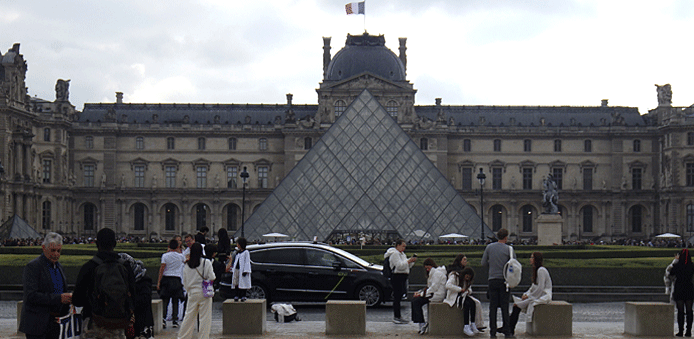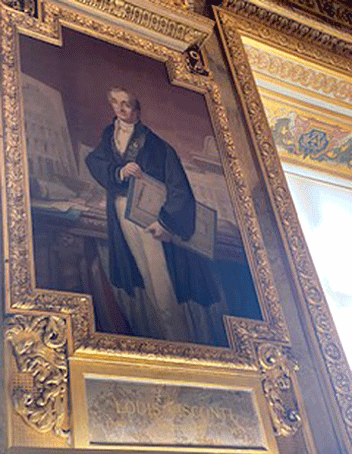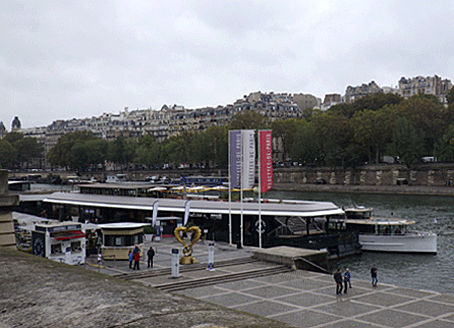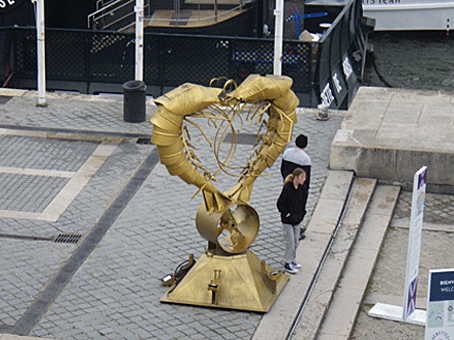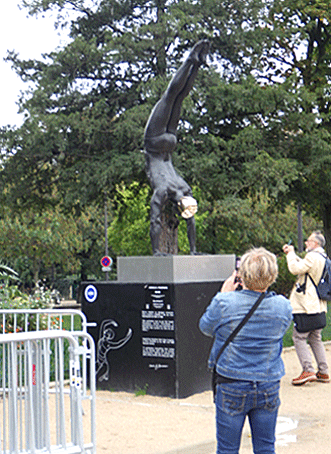PARIS, FRANCE
|
Paris is the capital and largest city of France, with an official estimated population of 2,102,650 residents in January 2023 in an area of more than 105 km2 (41 sq mi). Paris is the fourth-largest city in the European Union and the 30th most densely populated city in the world in 2022. Since the 17th century, Paris has been one of the world's major centres of finance, diplomacy, commerce, culture, fashion, and gastronomy. For its leading role in the arts and sciences, as well as its early and extensive system of street lighting, it became known as the City of Light. Paris is known for its museums and architectural landmarks, including the Louvre the most-visited art museum in the world. The historical district along the Seine in the city centre has been classified as a UNESCO World Heritage Site since 1991. Paris has an oceanic climate, typical of western Europe. This climate type features cool winters, with frequent rain and overcast skies, and mild to warm summers. Very hot and very cold temperatures and weather extremes are rare in this type of climate. Summer days are usually mild and pleasant, with average temperatures between 15 and 25 °C (59 and 77 °F), and a fair amount of sunshine. Each year there are a few days when the temperature rises above 32 °C (90 °F). Spring and autumn have, on average, mild days and cool nights, but are changing and unstable. Surprisingly warm or cool weather occurs frequently in both seasons. In winter, sunshine is scarce. Days are cool, and nights are cold but generally above freezing, with low temperatures around 3 °C (37 °F). Light night frosts are quite common, but the temperature seldom dips below −5 °C (23 °F). Paris sometimes sees light snow or flurries with or without accumulation. Paris has an average annual precipitation of 641 mm (25.2 in), and experiences light rainfall distributed evenly throughout the year. Paris is known for intermittent, abrupt, heavy showers. We booked a return flight to Paris and stay a couple of nights before heading to Le Harve. We arrived late morning and headed to our hotel. We were too early to check in so we asked them to store our luggage then headed out to walk around the area and find a café to have a Cappuccino. Our room was ready when we got back to the hotel so we settled in and changed for dinner later that evening. The next day we had a light breakfast then headed to the Louvre for a planned tour. We arrived a little early so we walked around the grounds, which included the Arc de Triomphe du Carrousel. |
|
|
Not to be confused with the Arc de Triomphe on the Champs-Élysées, the Arc de Triomphe du Carrousel is located in the park area outside the Louvre. It was built between 1806 and 1808 to commemorate Napoleon's military victories in the Wars of the Third and Fourth Coalitions. Napoleon's diplomatic and military victories are commemorated by bas-reliefs executed in rose marble. On the top of each of the eight marble columns are marble sculptures that faithfully reproduce the uniforms of the principal corps of Napoleon’s imperial army. The sculptured horses on top of the arch are copied from St Mark's Basilica in Venice. |
|
|
|
|
|
“Allegory Statues of Victorious France”. |
|
|
|
|
|
including the Mona Lisa, Venus de Milo, and Winged Victory. Originally built in the late 12th to 13th century under Philip II as a defensive fortress, in 1546 Francis I converted it into the primary residence of the French kings. During the French Revolution, the National Assembly decreed that the Louvre should be used as a museum to display the nation's masterpieces. Since 1993, the museum's main entrance has been the underground space under the Louvre Pyramid, or Hall Napoléon, which is a prominent feature at the front of the museum. |
|
|
used to carve little hearts on the bricks to track the hours they worked. . |
|
|
Louvre Museum and is a main feature of the museum’s entrance. It looks like an upside-down and smaller version of the Louvre Pyramid. |
|
|
The Great Sphinx of Tanis The Sphinx is a granite sculpture of a sphinx, whose date may be as early as the 26th century BC. It was discovered in the ruins of the Temple of Amun-Ra in Tanis, Egypt's capital during the 21st and 23rd Dynasties. It was created much earlier, but when exactly remains debated with hypotheses of the 4th or 12th Dynasty. All that is left of its original inscription are the parts alluding to pharaohs Amenemhat II (12th Dynasty), Merneptah (19th Dynasty) and Shoshenq I (22nd Dynasty). |
Ancient Greek statues in the Sully wing of the museum. . |
|
Statue of Athena, goddess of war, handicraft and practical reason. |
The Galerie d’Apollon The gallery reminded me of Catherines palace in St. Petersburg, and contains displays of Renaisance Art and the French Crown Jewels. |
|
Portrait of Lous Visconti Lous Visconti was an Italian-born French architect and designer. He designed many Parisian residences, public buildings and squares, and was briefly the official architect for the Louvre under Napoleon III. |
The Mona Lisa Portrait of Lisa Gherardini, wfe of Francesco del Giocondo, by Leonardo da Vinci. Leonardo da Vinci must have particularly treasured the Mona Lisa, as he never parted with her. She was given star status as soon as she arrived in the Louvre. The painting’s special appeal lies in its technical excellence, the sitter’s famous smile, the fantasy background landscape and the technique that envelops the figure in a misty haze. In 1966, this famous and fragile masterpiece was moved to the Louvre’s largest room – the Salle des États – where it is conserved in the best possible conditions, protected inside a temperature and humidity- controlled glass case. |
|
The Athena of Velletri or Velletri Pallas It is a type of classical marble statue of Athena, wearing a helmet. All statues of this type are 1st century Roman copies of a lost Greek bronze by Kresilas. Many ancient copies of the bronze have been found, but the most famous is the example found in the ruins of a Roman villa in a vineyard near Velletri in 1797. This example is now in the Louvre |
|
|
|
|
|
took a cab to the Eiffel Tower, just to say we were there. The tower is a wrought-iron lattice tower on the Champ de Mars. It is named after the engineer Gustave Eiffel, whose company designed and built the tower from 1887 to 1889. Locally nicknamed "La dame de fer" (French for "Iron Lady"), it was constructed as the centerpiece of the 1889 World's Fair, and to crown the centennial anniversary of the French Revolution. More recently, the Olympic Rings were added for the 2024 Summer Games. . |
right hand he is holding the staff of the French Imperial Eagle. The French Imperial Eagle was a figure of an eagle on a staff carried into battle as a standard by the Grande Armée/Army of Napoleon I during the Napoleonic Wars. The ‘eagles’ were based on the Roman Aquila and represented the regiments raised by the various departments of France. They were intended to instill feelings of pride and loyalty among the troops. |
|
Le Pont Royal Louis XIII ordered the construction of the bridge following a ferry accident on the Seine. It’s the third oldest bridge in Paris and a historic monument since 1939. |
|
|
The Ferry Terminal on the Seine. |
Beside the terminal is a metal statue depicting two crawfish posed in the shape of a heart. |
|
One of the many iconic buildings along the river. |
|
|
‘The Diver’ is a bronze and gilded sculpture created by American sculptor and author renowned for her superrealist and hyperrealist art. She created ‘The Diver” was selected by the Olympic Committee and the City of Paris to be exhibited on the same river in front of the Eiffel Tower for the 2024 Olympics and Paralympics. |
|
Back to Home – Western Europe 2023 Site Home Page Le Harve, France






